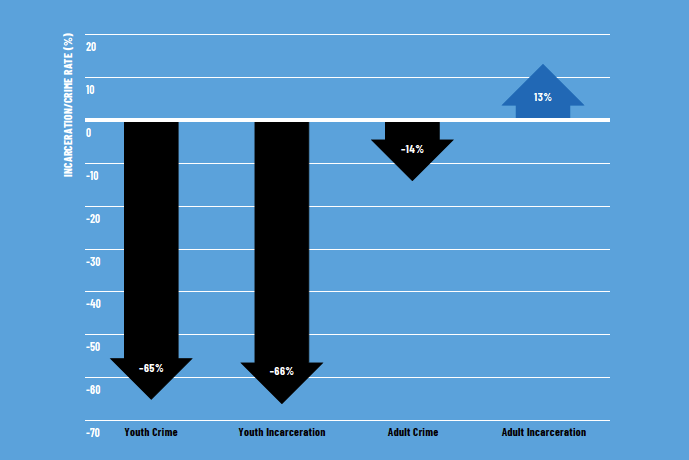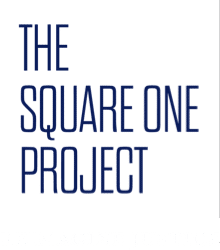June 2020 | Executive Session on the Future of Justice Policy Can we eliminate the youth prison? (and what should we replace it with?)
Overview
Since the turn of the 21st century, youth and adult crime rates in the United States have plummeted. While youth incarceration declined in turn, adult incarceration increased. This paper describes the scope and scale of youth decarceral efforts in the last twenty years and the increasing costs of youth incarceration in remote, large facilities. The author offers alternatives to youth institutionalization co-designed by communities, keeping kids close to home and within trusted social and familial networks. The success of the youth decarceral movement, while far from complete, offers lessons learned to adult system reformers.
Read Vincent Schiraldi & Nell Bernstein's Washington Post Op-Ed:
Authors

Vincent Schiraldi Justice Lab, Columbia University

Percent change in youth & adult crime & incarceration rates, 2000 to 2018
As this graph illustrates, adult and youth crime and incarceration rates have taken dramatically different paths since 2000, the year when youth incarceration peaked. From then until 2018, the youth crime rate declined by 65 percent while the youth incarceration rate also dropped by 66 percent. Meanwhile, from 2000 to 2018, adult crime rates declined by 14 percent, but adult incarceration rates actually increased by 13 percent.
Rangatahi Court
The Matariki and Rangatahi Courts in Northland Aotearoa/New Zealand, discussed in the paper, exemplify community-led safety initiatives that emphasize restoration rather than punishment for youth who have committed an offense.

Cumulative disadvantage: proportion of Black youth along the justice system trajectory, 2002 to 2004
Note: Dotted line represents demographic proportion of Black youth in the U.S. youth population.
The National Council on Crime and Delinquency (NCCD) found that, from 2002 to 2004, although Black Americans made up just 16 percent of American youth under 18, they constituted 28 percent of juvenile arrests, 37 percent of youth in detention, and 58 percent of youth admitted to adult prisons.
Zeroing Out Youth Prisons
Vincent Schiraldi joins Vivian Nixon, Greg Davis, Abdulkadir Ali, and Seema Gajwani to discuss the state of youth justice reform efforts and what lessons from the juvenile justice reform movement can be applied to adult justice reform efforts and the impact of community investments, featuring insights from “Can we eliminate the youth prison? (And what should we replace it with?)”
Takeaways
Youth justice reform must finish the job and zero out youth prisons.
Youth justice advocacy tactics can be translated to and replicated by the adult reform space.
Moving forward, youth justice responses to crime must be co-designed by communities.
